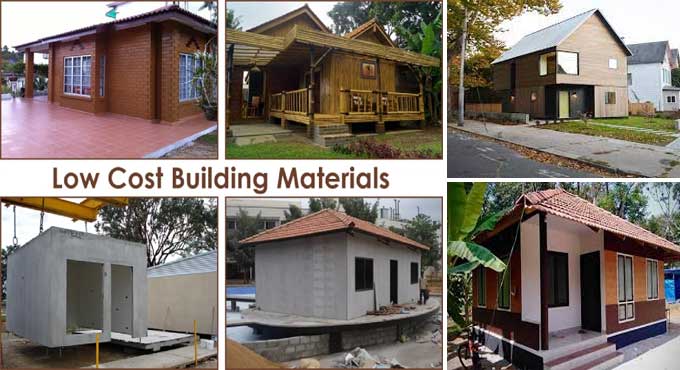
Taking Low-Cost Housing to the Next Level

Many people choose to live on a tight budget. Although it may sound easy, in our fast-paced, competitive world, everyone is busy working in the rat race, and it may seem difficult as a result. Market standards easily overshadow living on a budget when building a home. Low costs are often mistaken for low quality, but they can be the contrary.
The best way to save money on building your home is to use fine, affordable, convenient, and affordable materials while utilizing techniques that save you money.
If you want to build a big house for yourself, there's no harm in doing so. You do not need to spend money on all expenses since they are not necessary. If you believe something is high-quality, you may choose it based on its visual appeal or strength alone.
Building with Cost Effective Material
Building materials that are readily available near construction sites are best for building low-cost infrastructure or housing. Expenses associated with transportation are reduced since there is no need to transport.
Compressed Earth Bricks
This type of brick is made of lime and cement with the aid of a manual soil press. It is among the cheapest building materials available. An outer wall or other external structure of a building builds with these bricks. It is beneficial to use these bricks for several reasons.
Furthermore, they are strong, durable, and fire-resistant.
Adobe Block refers to molded earth blocks. The technology produces environmentally friendly, cost-effective masonry.
Interlocking Bricks
The lock between two bricks is easier and requires less mortar with these bricks, which have a depression on one side and a projection on the other. Compared to traditional baked bricks, this material is much more eco-friendly and reduces the cost of building a building.
Construction does not require the purchase of cement, sand, mortar, and stone dust, so none of these expenses will incur. Costs associated with transportation and labor can reduce significantly as well. There is no need for plasterwork either. The cost of a construction project reduces thanks to reduced bending, cement, and labor.
Hollow Fly Ash Bricks
Fly ash is the perfect alternative building material because it can replace many different building materials. Fly ash and water are used to make fly ash bricks. A self-cementing brick can describe as one made from Fly Ash due to its high calcium oxide content.
The benefits of hollow fly ash bricks are their low water penetration, lightweight, thermal insulation, and low cost. Clay, cement, sand, and ash create these incredibly light bricks. It also reduces the structural weight without compromising the strength and durability of the structure since the air gap between the bricks provides insulation for the structure.
Bamboo
Asia and Africa still use bamboo as a building material. As a result of its versatility, it can build walls and roofs that are both low-cost and light in weight and that are resistant to fire and termite damage.
In addition, its tensile strength is stronger than steel itself, making it a very durable and strong building material. A grass is widely available, easy to assemble, and relatively durable makes it an interesting building material thanks to its affordability, ease of assembly, and relative durability.
Magnesium Oxide Cement
Eco cement is made from waste materials and requires only 20% of the energy for Portland cement to be produced. It is not harmful to the people who live in homes where it is used as a construction material.
There are two main ingredients of this cement, magnesium oxide powder, and magnesium Chloride. There are products from magnesium mining. It is sustainable as a building material.
Conclusion
Although few people choose to build their infrastructure, it can lead to more sustainable living. You will need to live simpler and save up for the necessary resources. The experience-based lifestyle is increasingly becoming popular, with millennial favoring experiences over materialistic pleasures.
Younger generations are starting to care about how their actions impact the environment. That means they'll choose affordable, eco-friendly construction methods over other choices.
Affordable housing is becoming increasingly popular. This is mainly because healthcare, education, and consumer products are getting more expensive. But living in low-cost housing doesn't mean you'll only be able to do the bare minimum; it can help you focus on other things that can help you lead a happy & healthy life.
To learn more, watch the following video tutorial.
Video Source: indiavideodotorg
People in the middle or lower income brackets are finding it increasingly difficult to afford a house, which is why they're adopting technology that's cheaper & more environmentally friendly so they can build affordable ones.


